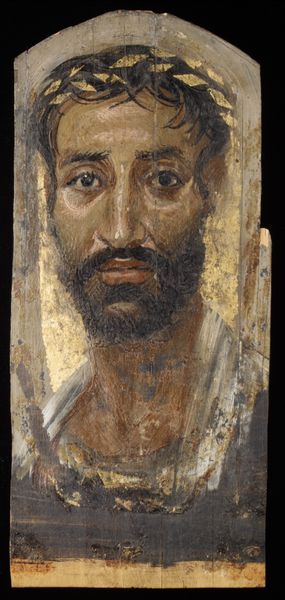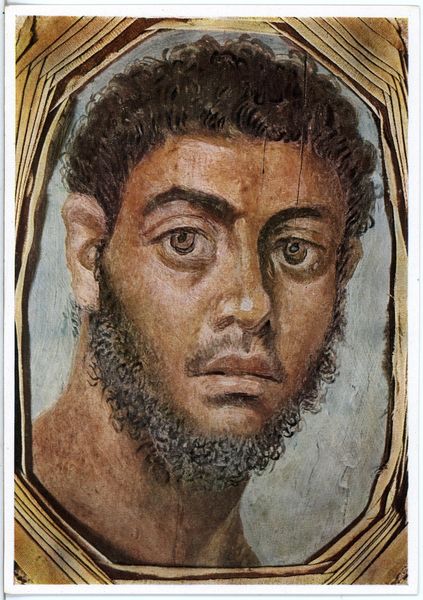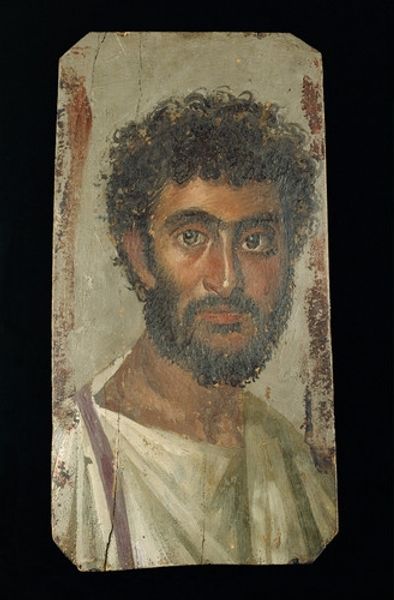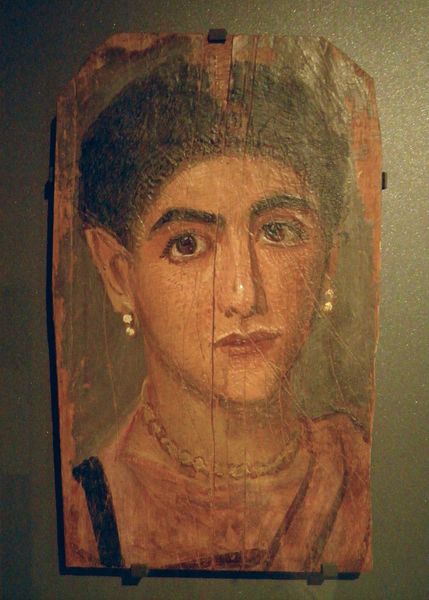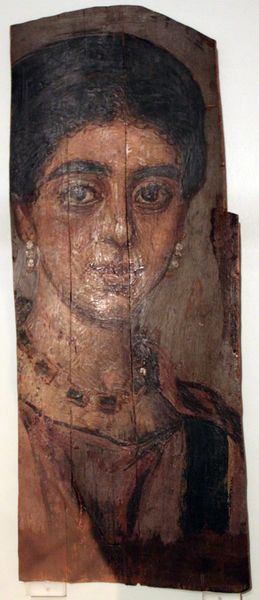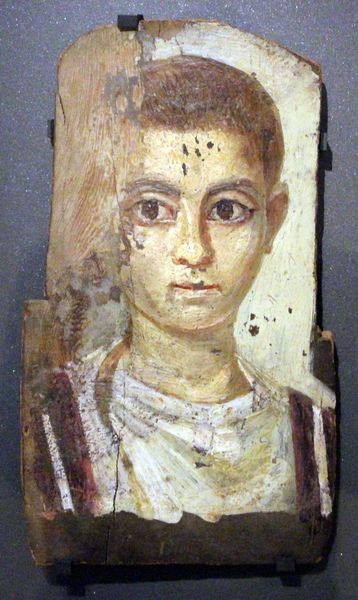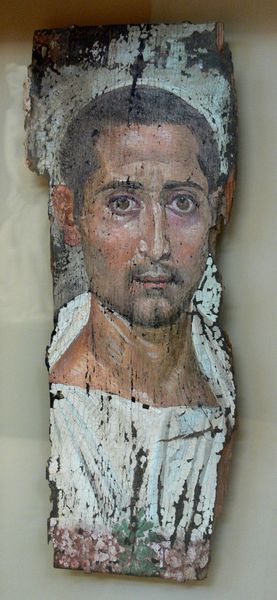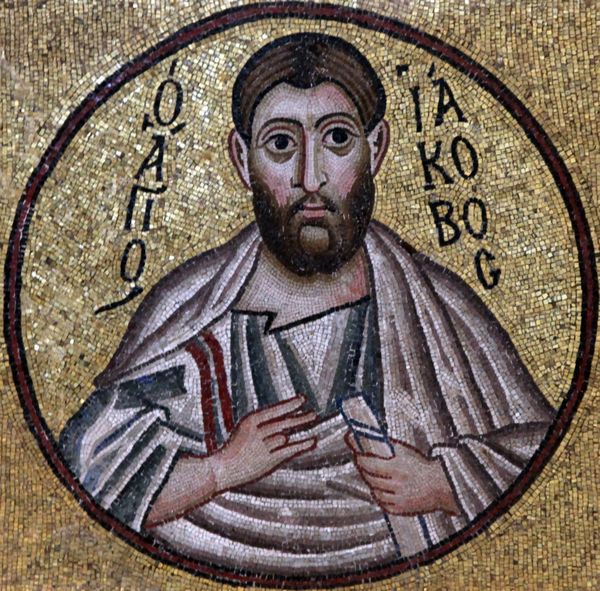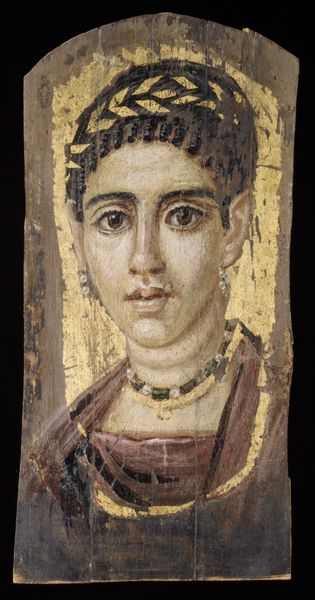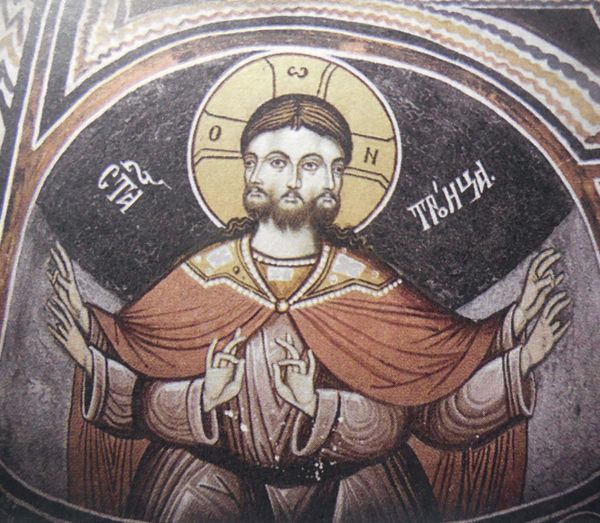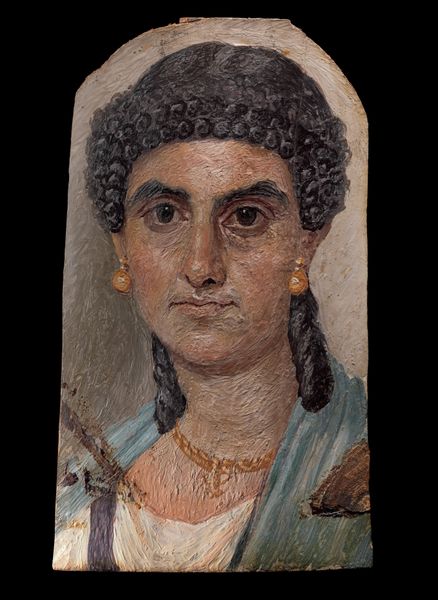
tempera, painting
#
portrait
#
still-life-photography
#
tempera
#
painting
#
greek-and-roman-art
#
ancient-egyptian-art
#
ancient-mediterranean
#
portrait art
#
realism
Copyright: Public domain
Editor: So, here we have "Älterer Mann Mit Vollbart", or "Elderly Man with a Full Beard," a tempera painting dating back to around 138 A.D. It's a Fayum portrait from the Kunsthistorisches Museum in Vienna. There's an intense, almost haunting realism to his gaze, despite some obvious wear and tear. How would you interpret this work? Curator: Immediately, I see a nexus of cultural identities. The portrait blends Egyptian funerary practices with Roman artistic styles. The image itself, think about it, isn't simply a likeness, it's an attempt to fix identity, to cheat death itself by embedding this man's very essence into the collective cultural memory. Notice how the eyes follow you, demanding recognition. What emotions does his direct gaze stir within you? Editor: Definitely a feeling of being watched, almost judged. It makes you consider the subject as an individual, a real person with thoughts and feelings, rather than just an artifact. The Roman realism seems to enhance that. Curator: Precisely! The Romans favored realism to convey status and character, while the Egyptians were more interested in ideals and afterlife. Look at his beard – a symbol of wisdom and status, rendered with surprisingly naturalistic detail. Now, how might this visual tension play into the understanding of identity and legacy in this time period? Editor: That's a really fascinating connection. The combined elements create a lasting image, representing not just the individual but a unique blend of cultures. It has encouraged me to consider how cultures meld and adapt symbols across time. Curator: Indeed. Visual culture helps reveal collective memory and shows how icons can transcend their initial meaning and significance through history. A fruitful consideration!
Comments
No comments
Be the first to comment and join the conversation on the ultimate creative platform.
